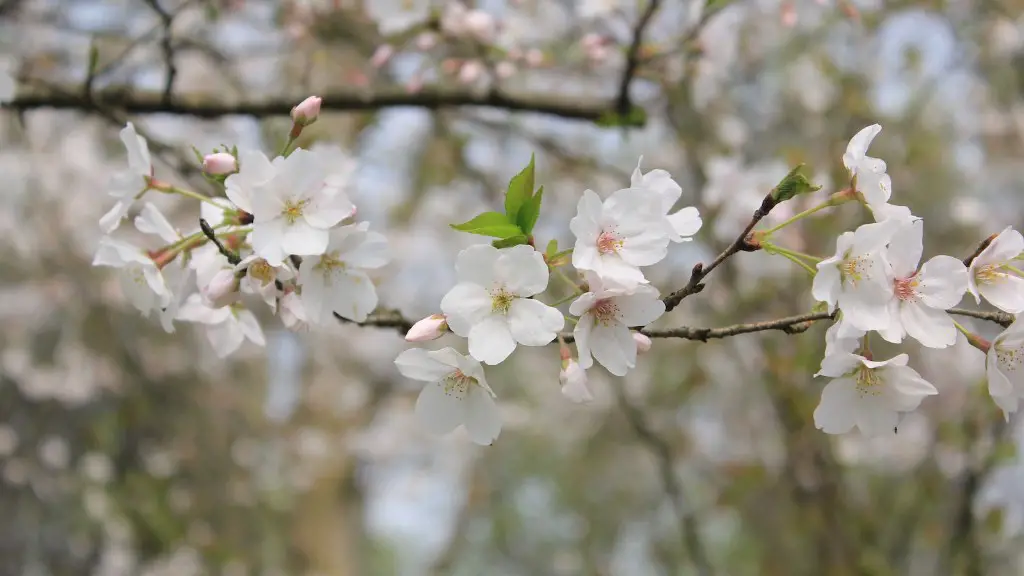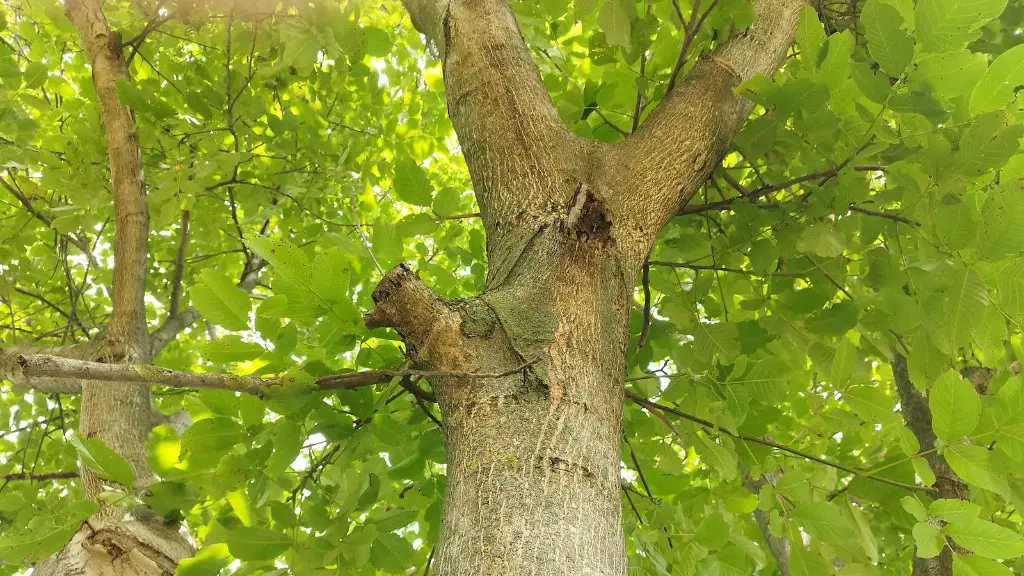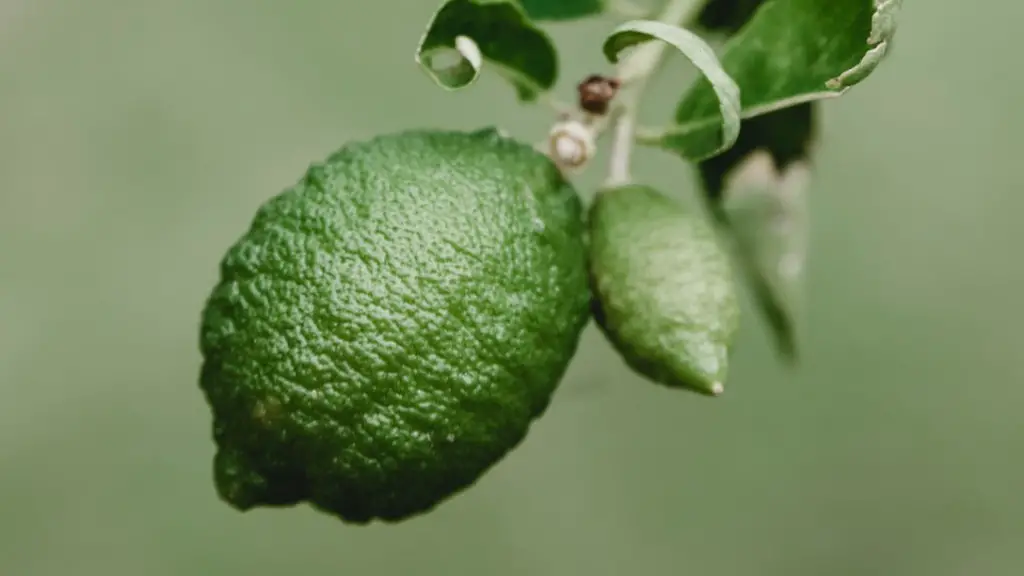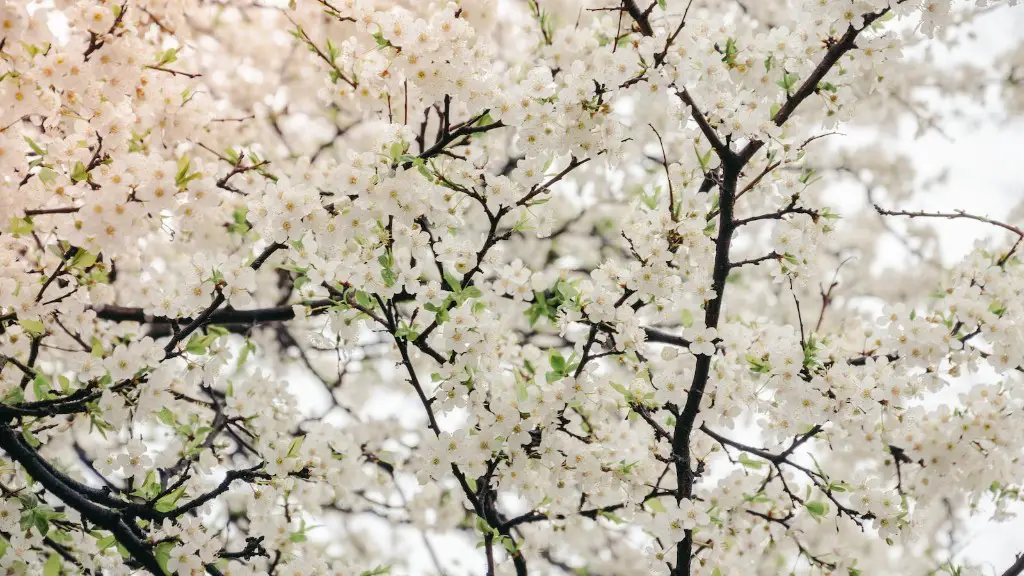For gardeners who have seen the devastating effects of aphids on a cherry tree, it can be chilling to see the small, sap-sucking insects coming back season after season to weaken their favorite tree. Understanding how to get rid of aphids on cherry tree leaves is essential for the health of the tree, as well as for the aesthetic appeal of the garden.
Aphids are small, pear-shaped insects that come in a variety of colors ranging from black and green to pink and yellow. These sap-sucking pests feed on the leaves of cherry trees, leaving behind a sticky residue called honeydew and a web-like substance known as sooty mold. These sticky substances can cause leaves to turn brown and wither, damaging the tree and its aesthetic attractiveness.
To combat the aphid infestation, gardeners must understand the best practices in order to prevent and manage the pests. Gardening experts suggest pruning away the affected areas of the tree, then treating with insecticidal soap, neem oil, or other natural solutions that are designed to specifically target soft-bodied pests such as aphids. Additionally, dusting the branches with a pesticide powder or aerosol can help to control aphid populations.
In some cases, gardeners can also employ the use of beneficial insects such as ladybugs, lacewings, and parasitic wasps, which feed on aphids in an effort to manage aphid populations. If a gardener has identified that the aphid infestation is severe, they should contact a professional for additional help and advice in removing the pests.
Chemical pesticides and insecticides also remain an option for gardeners who wish to target a more aggressive approach against aphids. However, it is very important to use the chemicals with caution and according to the manufacturer’s directions. Some chemical insecticides can be dangerous to the health of the cherry tree, the environment, and to the gardener if they are not handled correctly.
Overall, the health of a cherry tree can be easily harmed by aphid infestations, however understanding the methods in which to manage these pests can help gardeners take the necessary steps to protect and preserve their trees. Taking the right proactive steps can help ensure that cherry trees remain a part of the garden, providing shade and beauty each season without the nuisance of aphid infestations.
Managing Soil Quality and pH Levels to Reduce Aphid Populations
Good soil quality and proper pH levels can also help mitigate against aphid infestations and provide a better environment for the healthy growth of cherry trees.Testing the soil for levels of acidic and alkaline can provide valuable insight for gardeners, as the ideal pH levels for cherry trees range from 5.6-7.0. If the levels are too low, it’s possible for beneficial microorganisms to be suppressed and for pests to gain greater access to the tree’s roots.
Incorporating organic compost or manure into the soil can help restore the essential nutrients necessary for healthy growth, while adding elements such as sawdust, rock phosphate, and gypsum can help balance the pH levels. Adopting water-wise gardening strategies, such as mulching and deep root-watering, can be used to help control the population of pests such as aphids.
Protecting Against Future Infestations
Although using aggressive tactics may help to manage the current infestation, it is important to always bear in mind that prevention is the best method of defending against future aphid populations. Basic gardening practices, such as keeping the area free of weeds and debris, can help to reduce the chances of aphid infestations returning. Avoiding chemical fertilizers and pesticides can also help to protect the cherry tree from further issues.
In addition, attracting beneficial insects, birds, and amphibians to the garden by providing birdbaths and bird houses can help to keep aphid populations in check. While predatory insects, such as ladybugs and lacewings, can be purchased online or in plant nurseries, the presence of birds and frogs can be encouraged by creating an insect friendly habitat for them to explore.
Using Manual Removal Methods
Manually removing the aphids from the branches of a cherry tree is another an effective method in reducing populations of pests. Wear a pair of hand gloves, and lightly spray the leaves and branches with water from a hose or watering can. Make a solution of nine parts water and one part castile soap, dip a cloth in the solution and carefully rub the affected branches. The aphids should fall away from the tree, allowing for the removal of the pests.
To prevent potential damage to the tree, it is important to avoid using a pressure washer or a high-pressure spray of water. This can cause areas of the tree to become damaged and vulnerable to other pests or diseases. Always check the branches and leaves carefully, removing any remaining aphids that may have been missed.
Monitoring Aphid Populations
The impact of aphid infestations can be long lasting and require continuous monitoring over an extended period of time. Checking the branches of cherry trees regularly and applying pest control solutions when necessary can help maintain the health of the tree. If a gardener notices that their cherry tree has more pests than usual, it may be necessary to switch to more aggressive treatments in order to protect the tree.
By creating a schedule to check and monitor the cherry tree, gardeners can better understand the pest levels and apply treatments when necessary. This can help to stop the spread of aphids before they cause too much damage, allowing the tree to remain healthy and vibrant.
Cleaning Further Away from the Tree
Even after the tree has been treated, it is important to also clean around the cherry tree as well. This can reduce the chances of infestations returning in the future. Sweep up any fallen leaves, discard them in a sealed bag, and rake any debris and leaves away from around the tree.
It is also important to ensure that any fruit is kept off the ground, as it can attract pests. Alternatively, gardeners can enclose their cherry tree in a netting or pick up any unharvested fruit to limit the presence of pests and insects. Applying mulch around the tree can also help manage pest infestations.
Trees That Are Overwintering & Secondary Infestations
If the tree has been over-wintering, it is too late for a traditional insecticide approach as the aphids will already have had a chance to build up a population. In this case, the most effective approach will be to prune away the affected areas, spray trees and leaves with an insecticidal soap or neem oil, and then slowly monitor the tree’s progress.
It is also important to note that trees may suffer from secondary infestations, where other pests may have taken advantage of the weakened areas of the tree caused by the aphids. This can also manifest as mold or diseases, which can spread to other parts of the tree or plants. In this case, it is essential to seek advice from a qualified horticulturalist or pest control expert.
Ultimately, gardeners should review and update their pest management strategies in order to ensure their cherry trees remain healthy and robust. Understanding the particular habits of the pests will help ensure that the cherry tree remains an attractive feature in the garden and that the aphid infestations remain a distant memory.




